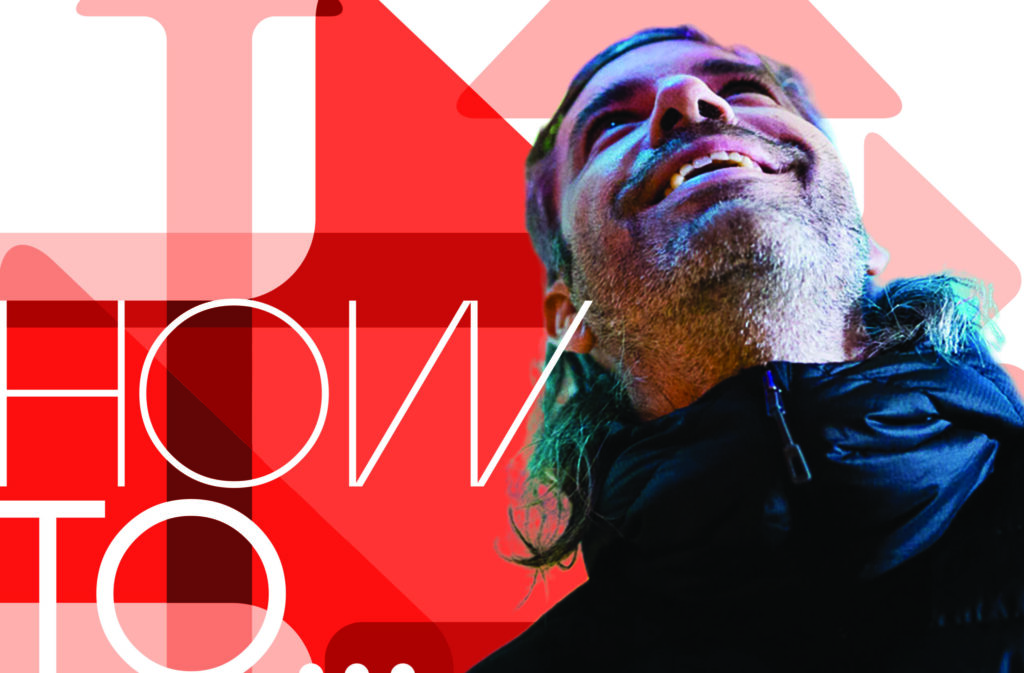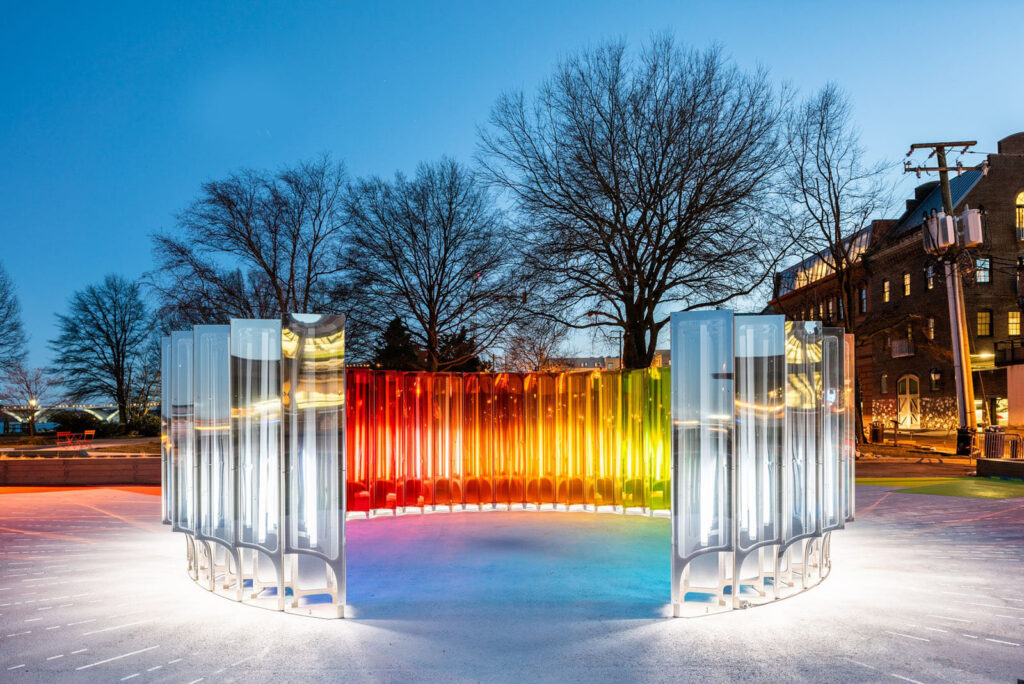
Speaker Spotlight: Michael Szivos
Today, we are highlighting Michael Szivos, founder of SOFTlab, a research-based design studio in New York City. The studio encourages experimentation with a sensibility on how design engages with people and its physical surroundings. Michael, like most of those at SOFTlab, lets his work cross other disciplines and interests beyond architecture. The results are a stunning display of color and intricate texture enhancing the space above and around you like great design should.
Read our Q&A with Michael below.

Would you give a short summary of what you’ll be speaking about at the AIA TN conference and its importance for architects?
Michael: I will show the process of how we develop a handful of projects from design to production and completion. Through these projects I plan to show how problems can be productive and cause us to rethink our initial assumptions. I will also discuss how we see context and how we seek to produce an experiential contextualism through our work rather than a literal reference to the context through the reframing of the sites of our projects.
With your approach to design as exploratory and experimental, and as projects are completed, what things have you found contributed the most to their success?
Michael: I think the success of a project can mean many things. When you are working in a more experimental or exploratory way, that might be defined by a tendency to take on explorations or methods that you have less experience with. In that sense if the project is simply executed properly, it is a success, but that is more of a pragmatic way of thinking about success. I think experimentation is kind of thrown around as a word that simply describes working in a non-conventional way, but I think any design practice has to decide what the value of experimentation is for their practice.
For us we use experimentation as a kind of friction or a way for us to reevaluate how we design and develop our work.
In many cases we experiment with methods or technology we have less experience with. If this changes and expands how we approach projects, then it is a success in the broader sense of our practice. On a project basis, I think the response and engagement from people is really a measure of the success of a project. Any project is driven by a speculation about how people will engage and react to it, but the only real way of evaluating that is to put the project out into the world.
Would you share a story on something discovered that was most unexpected?
Michael: In the early days of the office there was a lot that was unexpected. We were working on more temporary installations in galleries and exhibition spaces. Our design intuition was more driven by our experience in school which is mostly speculative and doing many fast temporary projects was a great way to learn more about the pragmatic side of making projects and how people react to them.
One of our early surprises was for an installation in a gallery in the Lower East Side in Manhattan. The installation was a large form found surface that was made out of laser cut photo paper panels. Each panel was printed with a vibrant gradient that was mapped onto the larger surface. This project was very much a self-initiated experiment. We made two decisions we weren’t really sure of at the time. One was to forgo a more complicated detail to attach the panels to one another and simply use a binder clip. The other decision was to have the vibrant gradient facing the inside of the surface. Our initial intuition was to have the color facing out so everyone would see it from far away, but we thought it might be nicer for people to discover the color as they walked around the installation. We were surprised by the response to the binder clips. Most of the work is digitally fabricated and the binder made the installation more approachable. Whereas most people don’t understand the various processes involved in digital fabrication, almost everyone understands how a binder clip works. It gave people a way to initially read how the project was made and as they explored further, they understood all the panels were different sizes and precisely cut. This made it clear to us the esoteric and sometimes cold nature of digital production and so we always consider how we might push back against this and even blur the lines between craft and digital production. Putting the color on the inside of the installation was also a surprising success. This caused people to move around and explore the installation. It also offered much more of a surprise.
The idea of a project unfolding in layers is something we continue to today because of this project. Sometimes we even have to push back against clients who ask for us to switch this relationship so that the interesting interior is more obvious from far away. Luckily, we have previous projects where we can show the value of these surprises.

How has producing/manufacturing your work changed your design process?
Michael: We have always been heavily involved in the production of our work. I think it dramatically changes our design process because we often consider details even at the conceptual phase of a project. The details are also an extension of the design and are not something we try to hide or conceal. To me, the details are comparable to line weights in a drawing. If a drawing does not have line weights it might look ok, but next a drawing with line weights it has less depth and character. The content of the two drawings are the same, but the drawing with line weights has so much more nuance and consideration when looked at closer.
How do you decide if a project is too far out of SOFTlab’s wheelhouse or just the right amount of stretch to lead to new experimentation and discovery?
Michael: We approach projects as if nothing is outside of our wheelhouse, sometimes we design challenges into the project to explore something we are interested in. We would only really turn down work if the conceptual ambitions of a project are not a good fit for us.
Where are most of your projects located? Is this strategic with the type of work or research you are passionate about? Where would you like to design a project that you haven’t already and why?
Michael: The context of our work ranges from public spaces to corporate lobbies to events. Each of these contexts drive how we approach projects and many times we use one context to reevaluate another. Over the years we have grown to doing larger scale work and we are now trying to reintroduce smaller scale projects to the work in the office. Working in galleries and exhibition spaces. We haven’t done anything as part of a performance like dance or theater, that would be exciting.
What other interests outside of design do you have that contribute to your work?
Michael: Personally, I am interested in tons of things from other disciplines. Interaction design, graphic design, branding and strategy, music, etc. I think these interests are why the studio has taken on work that straddles architecture and many other disciplines.
Would you share some advice to younger architects or those new to architecture about the profession and the process of design?
Michael: What I often share with students who are graduating or who are still in school is the importance of being involved in parts of the discipline that aren’t necessarily about making buildings. For instance, if the school has a publication or exhibitions, getting involved in that. In places like NYC and other cities there are tons of organizations that support young designers and architects. To get involved in those organizations and similar organizations from other disciplines. I think students and younger architects sometimes put blinders on and everything is about designing and making buildings. While this is important,
I think it is crucial to branch out to discover your voice, how you fit in the broader discipline, and how it overlaps with others.
It may be that you find ideas in other disciplines that influence how you think about architecture, you might find fruitful collaborators, or discover you are more interested in a transdisciplinary approach to design.
What is one thing about Chattanooga or East Tennessee that you are interested in or would like to know more about?
Michael: It’s been a while since I have been to Tennessee. I think last time I was in Chattanooga was on a family trip as a teenager. I am just excited to visit and see how much it has changed.


